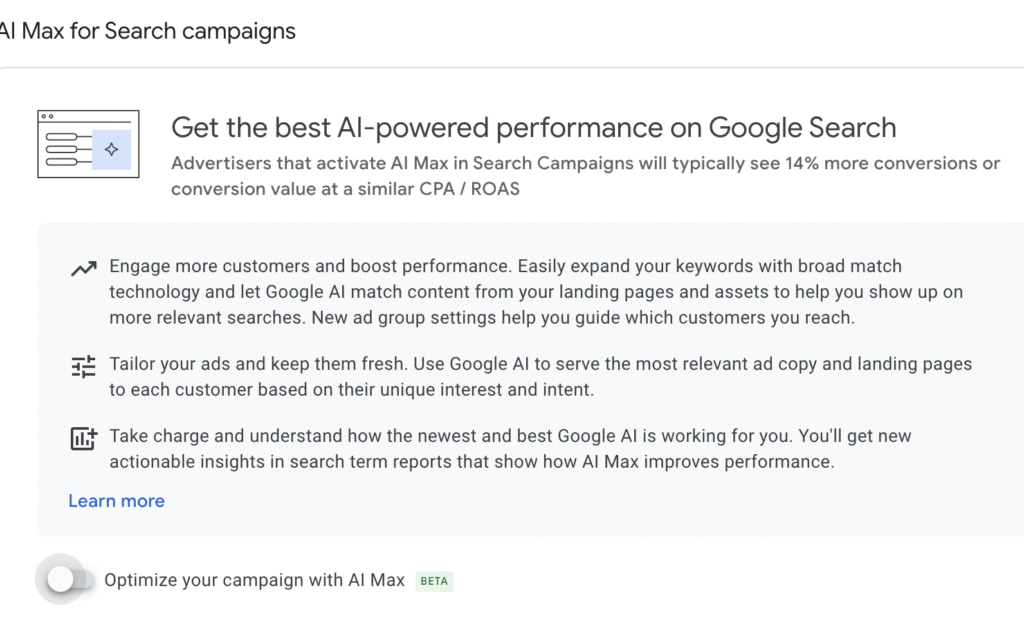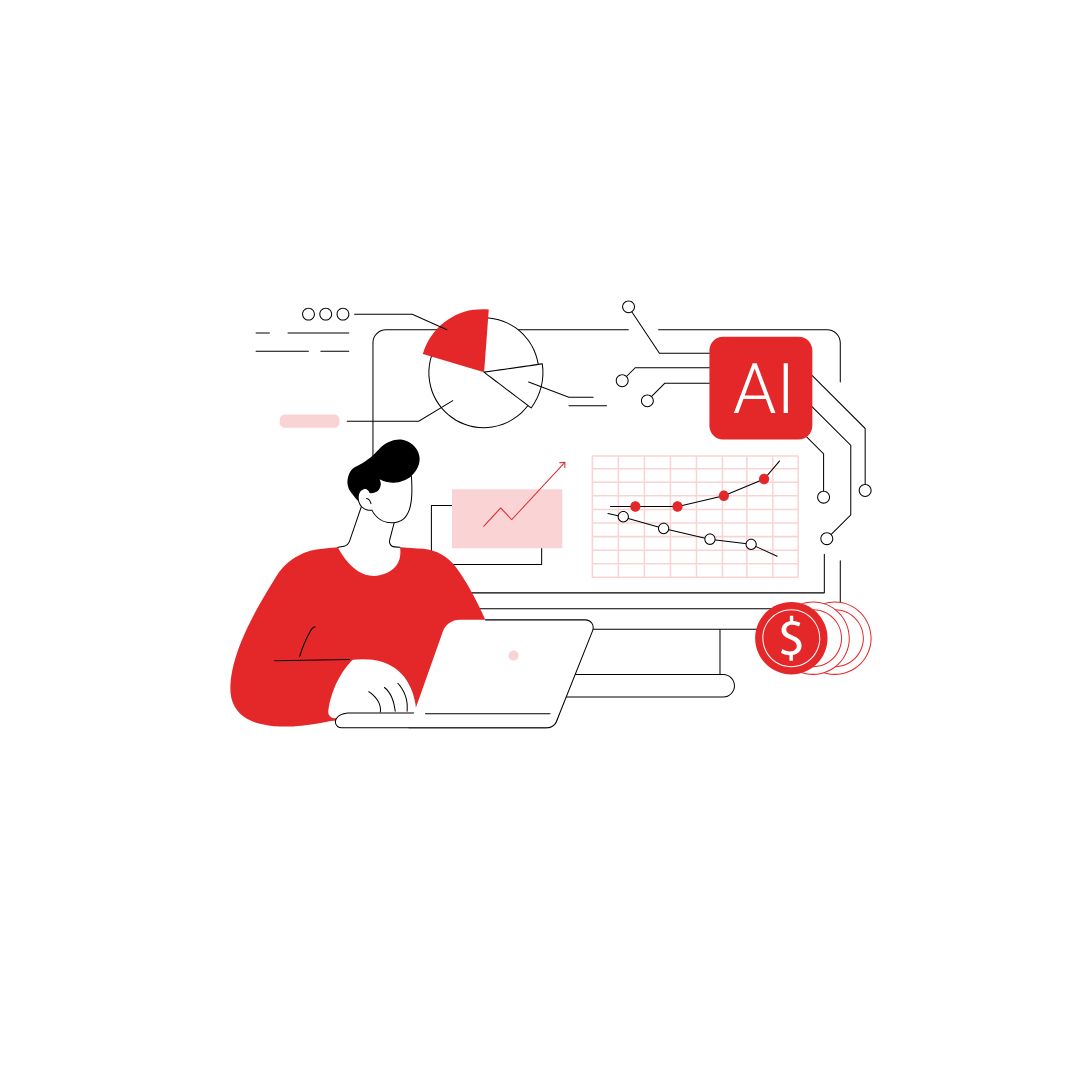What is AI Max for Search Campaigns?
AI Max is a one-click feature suite that you can activate within standard Search campaigns. Introduced in mid-2025, it’s designed to augment traditional campaigns with AI-powered enhancements, while maintaining control and transparency
Key Components Include:
- Search Term Matching: Broad match + keyword‑less targeting to expand reach beyond your existing keywords
- Asset Optimization: AI auto-generates headlines, descriptions, and calls-to-action based on your website and existing ads
- Final URL Expansion: Automatically directs users to the most relevant landing page on your site, with configurable rules
- Additional Controls & Reporting: Includes ad group-level location intent targeting, brand exclusions, improved search terms and asset reporting, and match‑type visibility
How AI Max for Search Campaigns Differ from Regular Search Campaigns?
| Feature | Regular Search Campaigns | With AI Max |
|---|---|---|
| Keyword targeting | Manually selected (exact, phrase, broad) | Expanded via AI‑based broad + keyword‑less matching |
| Ad creation | Manually written (RSAs, etc.) | AI-generated assets based on existing content |
| Landing page control | Fixed final URL | Dynamic selection from domain, with rules |
| Transparency & reporting | Standard reports | Enhanced: match‑type segmentation, asset-level performance |
| Control & exclusions | Available only at campaign level | Granular: brand, location intent, URL, asset removals |
Should Advertisers Use AI Max?
Advantages
- Performance Uplift: Early data shows ~14% more conversions or value at similar CPA/ROAS—and up to 27% lift when relying heavily on exact/phrase keywords
- Efficiency: Less manual effort—AI handles query expansion, asset creation, and landing page selection
- Transparency: New match‑type “AI Max” reports help isolate AI performance
- Control: Options to exclude unwanted brands, URLs, or assets; turn off specific AI modules if needed
- Easy Testing: Built-in experiment splitter (50/50) allows A/B testing without duplicating campaigns
Considerations
- Scope creep: Since AI may expand targeting or landing pages beyond your intended scope, monitoring is essential
- Still in Beta: While rolling out to all advertisers in Q3 2025, availability may vary
- Potential costs: Automation can drive results—but you must ensure the expansion is relevant and cost-effective
Recommended Approach
- Test first: Use experiments to compare AI Max versus baseline, create an experiment with AI powered performance campaign so that you can measure your campaign against your
- Monitor closely: Track performance by match type and landing page
- Use controls: Implement brand exclusions, URL restrictions, and negative keywords to refine AI decisions
How to Create AI-Powered Performance on Google Search
You don’t need to create a separate campaign for this, you can go to you current campaign and click on campaign settings, you will find the below setting to switch on the AI Max option

Conclusion
AI Max for Search campaigns offers a powerful, AI-enhanced layer to traditional Search Ads—expanding reach, automating asset creation, and improving landing page relevance, all while preserving advertiser control.
For those already using Smart Bidding, it’s well worth testing AI Max in a controlled experiment. With vigilant monitoring and smart controls, it has the potential to boost performance without sacrificing precision




